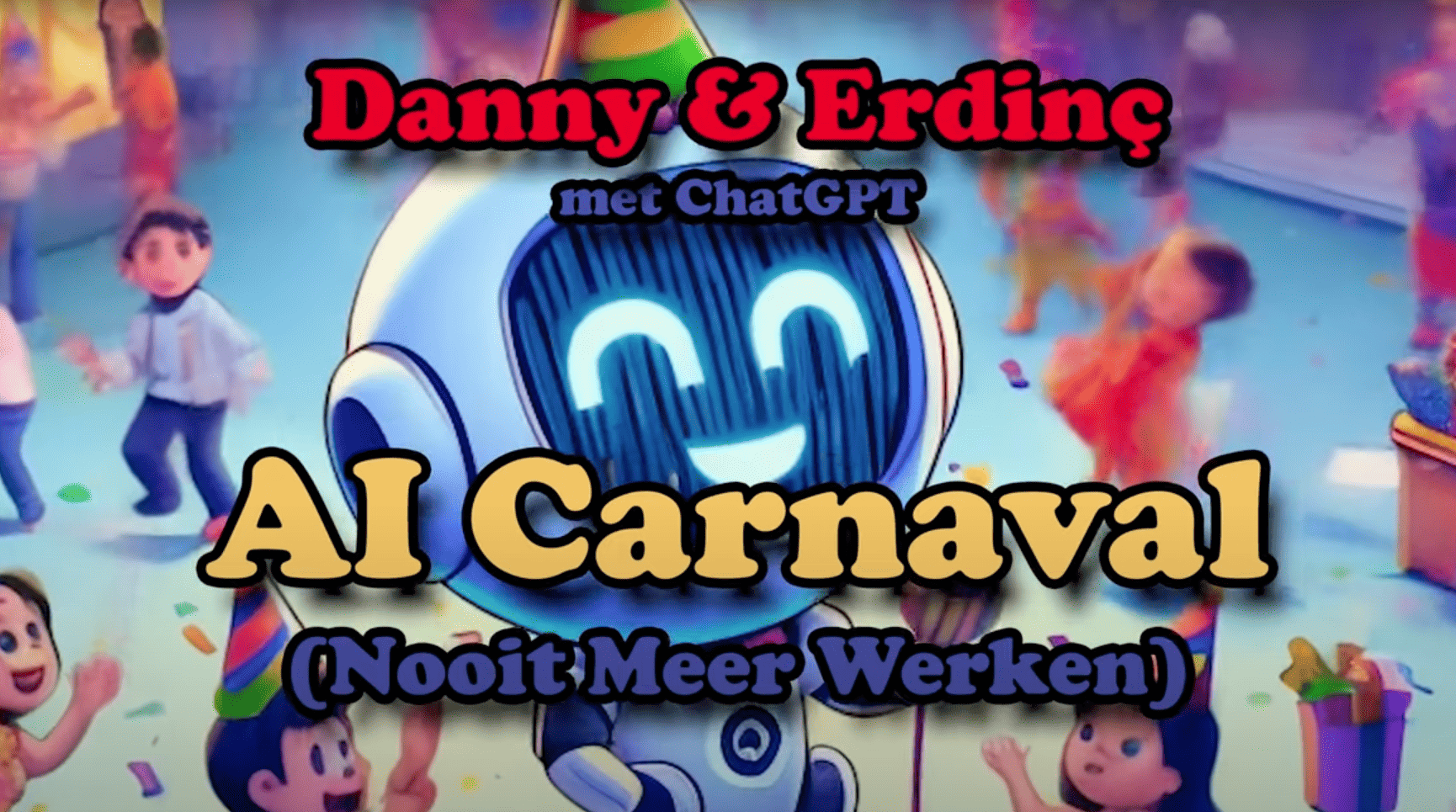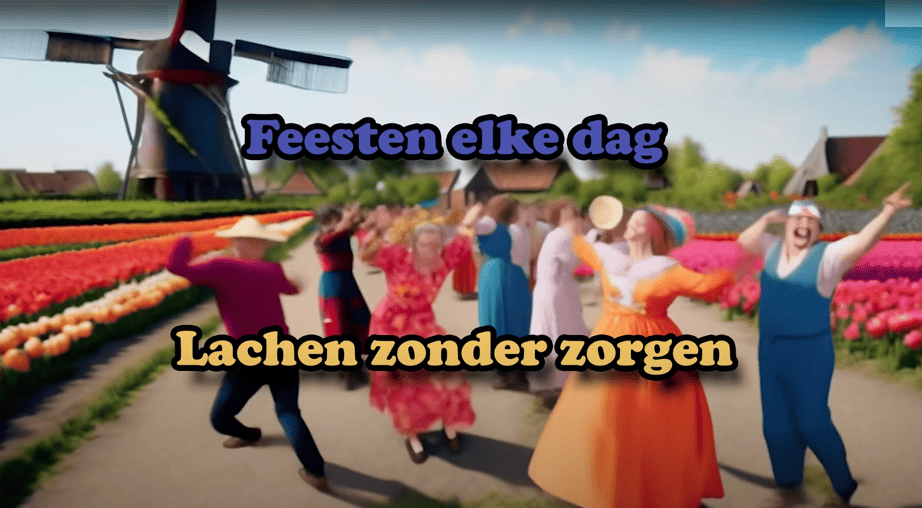
We see stiff-moving avatars to electronic music among tulips and windmills, beer-drinking people with blurred faces in a pub, puppets in party clothes, and some fairground images. Yes, it is a jolly lot, and the lyrics we hear clearly link to carnival. But friend and foe will quickly agree: musically, textually, and graphically, there is so much to criticize about this piece of music that it will never be able to become a real hit. Not to mention the “spirit of carnival,” which – although difficult to define anyway – is nowhere to be recognized here.
But that’s not what this music video’s creators aimed at in the first place. “This project is not only a creative expression, but mainly an attempt to spark discussion about the role of AI in our daily lives,” they say. Accordingly, the music piece by Danny Bloks and Erdinç Saçan, both teachers at Fontys ICT, was produced entirely with the help of AI.
Why this is important
It’s carnival, the annual celebration where everyone gets to shake off all their worries for a while. Music and human emotions play an essential role. Not exactly a place where artificial intelligence can play a role, you might think. And yet, two ICT teachers have tried just that. “To spark discussion about the role of AI in our lives.”
The carnival song and accompanying music video were created using several Generative AI tools to generate lyrics, vocals, music, images, and videos. The AI tools used are:
- ChatGPT: For writing the lyrics.
- ElevenLabs: For the vocals.
- Suno: For music samples, including the beginning, chorus, and a solo trumpet.
- Dall-E 3 and HuggingFace Photo Maker: For images.
- Kaiber, InVideo, Pika Labs and Neural Frames: For videos.
- Adobe Photoshop GenAI Fill: For composing the single cover.
Bloks mixed and mastered the music track (also using AI applications) and merged the videos with Adobe Premiere. “The project highlights the growing influence of AI in the creative industries and stimulates a broader discussion about the integration of AI into various aspects of our lives, including carnival,” he says. “Some errors and biases in text and video footage were deliberately included in the final result to highlight both the possibilities and the many challenges that AI presents.”

Plenty of errors
Yes, errors are plentiful. These are visible not only in the blurry images but also in the texts, which leave quite a bit to be desired in terms of both content and rhythm. Not to mention how this artificial intelligence has tried to capture the spirit of carnival. An average inhabitant of Maastricht, Rio de Janeiro, or Cologne, who was brought up in carnival, will see the song “AI Carnaval (Never Work Again)” mainly as proof that no machine is capable of replacing the soul of carnival.
And Danny Bloks and Erdinç Saçan understand that, too. Still, they hope to spark a discussion with their piece of music. “By bringing together technology and human creativity, this project catalyzes conversations about future human-machine interaction. Will anyone soon be able to produce a carnival cracker in an hour?” The answer will depend on your perspective and maybe your place of birth.

